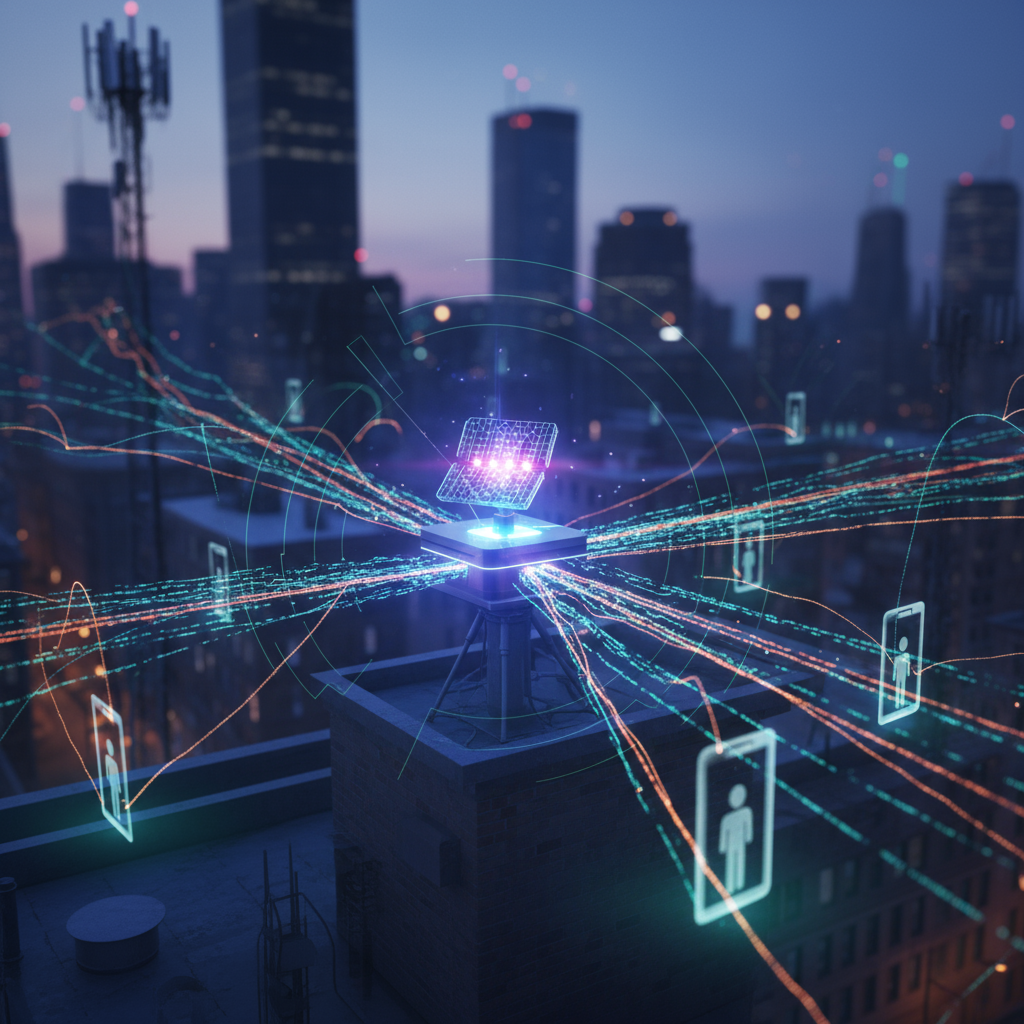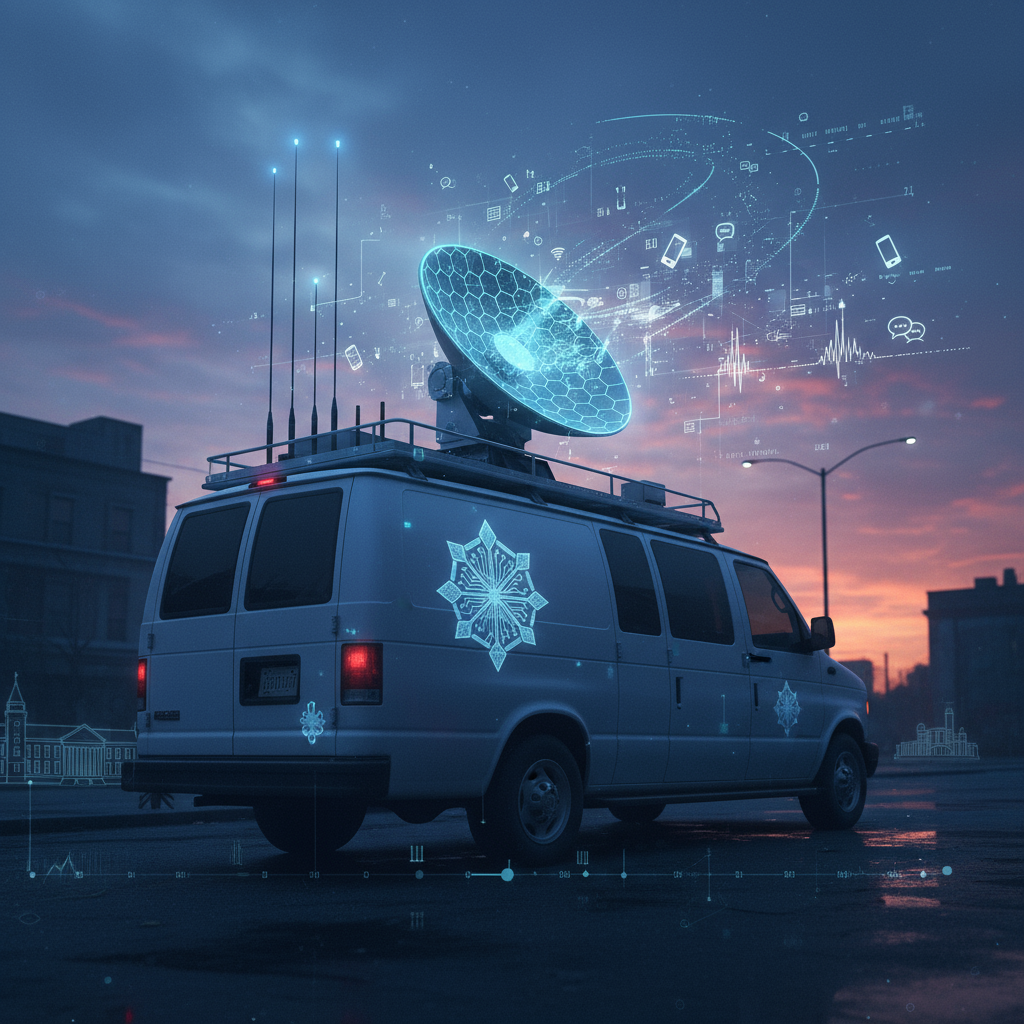In an age where digital privacy feels increasingly elusive, a recent revelation has put government surveillance firmly back in the spotlight. News broke earlier this year that US Immigration and Customs Enforcement (ICE) spent a staggering $825,000 on vehicles equipped with IMSI catchers, sophisticated technology designed to spy on nearby mobile phones. This isn’t just about a hefty price tag; it’s about the implications for personal liberty, due process, and the very fabric of a free society.
The acquisition, identified by TechCrunch in public records, details a contract for “Cell Site Simulator (CSS) Vehicles to support the Homeland Security Technical Operations program.” While the term “cell site simulator” might sound innocuous, it refers to a device with a far more potent and intrusive capability. Let’s delve into what this technology entails and why its deployment by ICE raises significant concerns.
What Are IMSI Catchers and How Do They Work?

The “Fake Cell Tower” in Your Neighborhood
An IMSI catcher, often referred to as a “Stingray” (a brand name that has become a generic term), is a highly specialized piece of surveillance equipment. At its core, it mimics a legitimate cell phone tower, tricking nearby mobile devices into connecting to it instead of the actual cellular network. Once a phone connects, the IMSI catcher can perform a range of surveillance activities without the user’s knowledge or consent.
These devices derive their name from the International Mobile Subscriber Identity (IMSI), a unique identifier assigned to every mobile phone. By broadcasting a stronger signal than legitimate cell towers, the IMSI catcher compels phones in its vicinity to switch their connection. This is where the real data collection begins.
Unveiling Surveillance Capabilities
Once a phone is connected to the IMSI catcher, the device can effectively become a central hub for information. Here are some of the key capabilities:
- Location Tracking: IMSI catchers can pinpoint the precise location of a mobile device, often far more accurately than triangulating from cell towers. They can track movements in real-time, mapping out an individual’s daily routines and associations.
- Metadata Collection: This includes the IMSI and IMEI (International Mobile Equipment Identity) of a phone, revealing who owns the device and what type it is. It can also log the phone numbers of incoming and outgoing calls and texts, even if the content isn’t directly intercepted.
- Interception of Communications: While often debated, some advanced IMSI catchers are believed to have the capability to intercept the content of calls and text messages, especially if the device can downgrade the encryption on the cellular connection.
- Denial of Service: In some cases, an IMSI catcher can even be used to block cellular service for certain devices, causing disruptions or preventing communication.
These capabilities paint a picture of powerful and extensive surveillance potential, allowing government agencies to gather a vast amount of sensitive personal data from unsuspecting individuals.
ICE’s History with Cell Site Simulators

A Recurring Theme in Surveillance Debates
It’s important to note that ICE’s recent $825,000 expenditure on these CSS vehicles is not an isolated incident. As TechCrunch highlighted, this “isn’t the first time ICE has used cell-site simulators.” The agency has a documented history of deploying this technology, a practice that has consistently drawn scrutiny from privacy advocates and civil liberties organizations.
In fact, the use of Stingrays by various law enforcement agencies across the U.S. has been a contentious issue for years. Documents obtained through Freedom of Information Act requests and lawsuits have revealed the widespread deployment of these devices by federal and local authorities, often with little public oversight or transparency. The ACLU, for instance, has been at the forefront of exposing these practices, revealing the extent to which these powerful tools have been integrated into surveillance operations.
The Veil of Secrecy
One of the most troubling aspects of IMSI catcher deployment is the historical lack of transparency surrounding their use. Agencies have often signed non-disclosure agreements with manufacturers, preventing them from revealing details about the technology or its operations in court or to the public. This secrecy makes it incredibly difficult for individuals to know if their devices have been targeted or for legal challenges to proceed effectively.
While some courts have started to demand more transparency and warrants for the use of these devices, the practice remains opaque in many jurisdictions. The purchase of dedicated vehicles further suggests a systematic and integrated approach to mobile surveillance, rather than an ad-hoc deployment.
Ethical and Legal Implications
Privacy vs. Security: A Constant Tug-of-War
The use of IMSI catchers by ICE ignites a fundamental debate between national security and individual privacy. Proponents argue that these tools are essential for tracking dangerous criminals, preventing terrorism, and enforcing immigration laws. They claim that the data collected is crucial for intelligence gathering and that proper safeguards are in place to prevent abuse.
However, critics argue that the broad, dragnet nature of IMSI catchers – which indiscriminately collect data from all phones in a given area – constitutes a mass surveillance tool that bypasses constitutional protections. When an IMSI catcher is active, it doesn’t just target a suspect; it sweeps up data from everyone nearby, including innocent bystanders, journalists, lawyers, and political activists.
The Fourth Amendment and Due Process
The Fourth Amendment to the U.S. Constitution protects citizens from unreasonable searches and seizures. The central question is whether connecting to an IMSI catcher, and thus having sensitive data extracted, constitutes a “search” that requires a probable cause warrant. Courts have delivered mixed rulings on this, but a growing consensus is that such intrusive technology should necessitate judicial oversight.
Furthermore, the surreptitious nature of IMSI catchers means individuals are often unaware their data has been collected, making it impossible for them to challenge the legality of the search or to seek remedies for potential privacy violations. This lack of due process undermines fundamental legal protections.
Given ICE’s broad mandate, concerns are amplified regarding how this technology might be used in immigration enforcement, potentially targeting communities, activists, or individuals exercising their rights to protest or organize. The possibility of racial profiling or targeting based on perceived immigration status becomes a very real and alarming prospect.
Conclusion: Paving the Way for a Surveillance Society?
ICE’s $825,000 investment in IMSI catcher-equipped vehicles is more than just a financial transaction; it’s a significant step in the ongoing expansion of government surveillance capabilities. While national security and law enforcement are undeniably important, the means by which they are achieved must always be scrutinized against democratic values and constitutional rights.
The increasing sophistication and pervasive nature of technologies like IMSI catchers demand robust public discourse, stringent legal frameworks, and transparent oversight. Without these, we risk sleepwalking into a future where privacy is a relic of the past, and every mobile device becomes a potential conduit for unwarranted government intrusion. It’s imperative that citizens, policymakers, and legal experts continue to press for accountability and ensure that technological advancements do not come at the cost of our fundamental freedoms.

